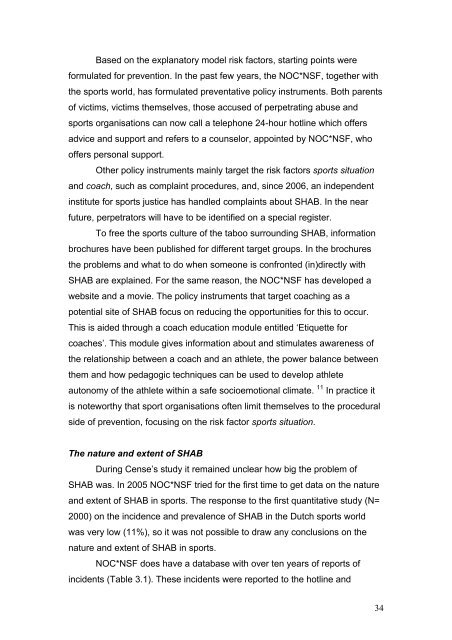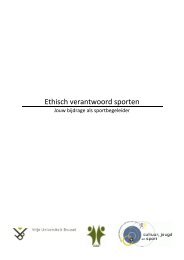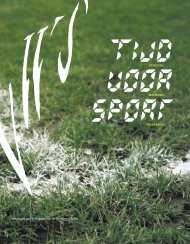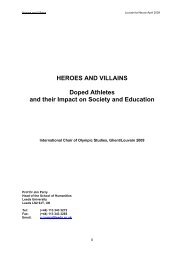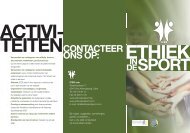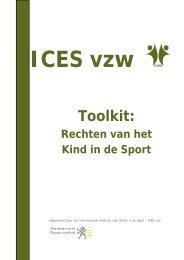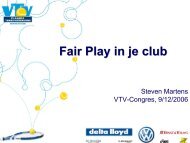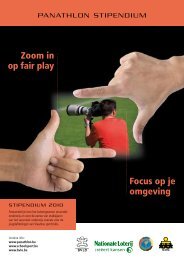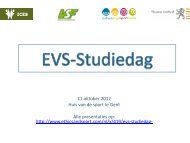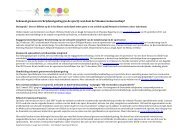Part 3 GLOBAL ISSUES: HARASSMENT AND ABUSE RESEARCH
Part 3 GLOBAL ISSUES: HARASSMENT AND ABUSE RESEARCH
Part 3 GLOBAL ISSUES: HARASSMENT AND ABUSE RESEARCH
Create successful ePaper yourself
Turn your PDF publications into a flip-book with our unique Google optimized e-Paper software.
Based on the explanatory model risk factors, starting points were<br />
formulated for prevention. In the past few years, the NOC*NSF, together with<br />
the sports world, has formulated preventative policy instruments. Both parents<br />
of victims, victims themselves, those accused of perpetrating abuse and<br />
sports organisations can now call a telephone 24-hour hotline which offers<br />
advice and support and refers to a counselor, appointed by NOC*NSF, who<br />
offers personal support.<br />
Other policy instruments mainly target the risk factors sports situation<br />
and coach, such as complaint procedures, and, since 2006, an independent<br />
institute for sports justice has handled complaints about SHAB. In the near<br />
future, perpetrators will have to be identified on a special register.<br />
To free the sports culture of the taboo surrounding SHAB, information<br />
brochures have been published for different target groups. In the brochures<br />
the problems and what to do when someone is confronted (in)directly with<br />
SHAB are explained. For the same reason, the NOC*NSF has developed a<br />
website and a movie. The policy instruments that target coaching as a<br />
potential site of SHAB focus on reducing the opportunities for this to occur.<br />
This is aided through a coach education module entitled ‘Etiquette for<br />
coaches’. This module gives information about and stimulates awareness of<br />
the relationship between a coach and an athlete, the power balance between<br />
them and how pedagogic techniques can be used to develop athlete<br />
autonomy of the athlete within a safe socioemotional climate. 11 In practice it<br />
is noteworthy that sport organisations often limit themselves to the procedural<br />
side of prevention, focusing on the risk factor sports situation.<br />
The nature and extent of SHAB<br />
During Cense’s study it remained unclear how big the problem of<br />
SHAB was. In 2005 NOC*NSF tried for the first time to get data on the nature<br />
and extent of SHAB in sports. The response to the first quantitative study (N=<br />
2000) on the incidence and prevalence of SHAB in the Dutch sports world<br />
was very low (11%), so it was not possible to draw any conclusions on the<br />
nature and extent of SHAB in sports.<br />
NOC*NSF does have a database with over ten years of reports of<br />
incidents (Table 3.1). These incidents were reported to the hotline and<br />
34


